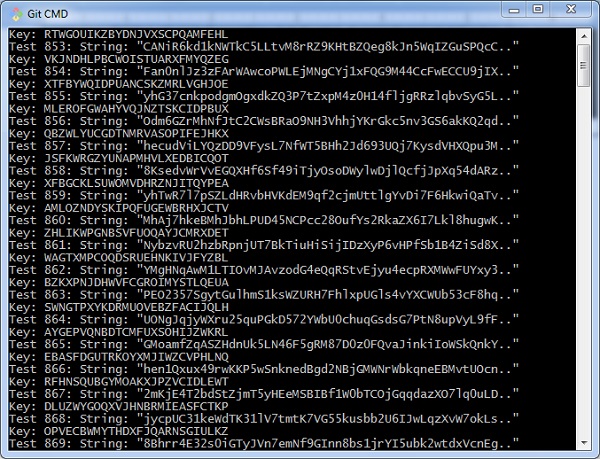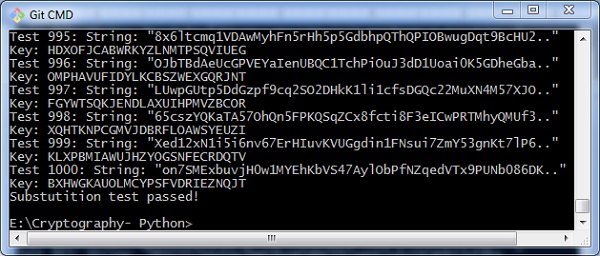
- Home
- Overview
- Double Strength Encryption
- Python Overview and Installation
- Reverse Cipher
- Caesar Cipher
- ROT13 Algorithm
- Transposition Cipher
- Encryption of Transposition Cipher
- Decryption of Transposition Cipher
- Encryption of files
- Decryption of files
- Base64 Encoding & Decoding
- XOR Process
- Multiplicative Cipher
- Affine Ciphers
- Hacking Monoalphabetic Cipher
- Simple Substitution Cipher
- Testing of Simple Substitution Cipher
- Decryption of Simple Substitution Cipher
- Python Modules of Cryptography
- Understanding Vignere Cipher
- Implementing Vignere Cipher
- One Time Pad Cipher
- Implementation of One Time Pad Cipher
- Symmetric & Asymmetric Cryptography
- Understanding RSA Algorithm
- Creating RSA Keys
- RSA Cipher Encryption
- RSA Cipher Decryption
- Hacking RSA Cipher
Testing of Simple Substitution Cipher
In this chapter, we will focus on testing substitution cipher using various methods, which helps to generate random strings as given below −
import random, string, substitution
def main():
for i in range(1000):
key = substitution.getRandomKey()
message = random_string()
print('Test %s: String: "%s.."' % (i + 1, message[:50]))
print("Key: " + key)
encrypted = substitution.translateMessage(message, key, 'E')
decrypted = substitution.translateMessage(encrypted, key, 'D')
if decrypted != message:
print('ERROR: Decrypted: "%s" Key: %s' % (decrypted, key))
sys.exit()
print('Substutition test passed!')
def random_string(size = 5000, chars = string.ascii_letters + string.digits):
return ''.join(random.choice(chars) for _ in range(size))
if __name__ == '__main__':
main()
Output
You can observe the output as randomly generated strings which helps in generating random plain text messages, as shown below −

After the test is successfully completed, we can observe the output message Substitution test passed!.

Thus, you can hack a substitution cipher in the systematic manner.
Advertisements